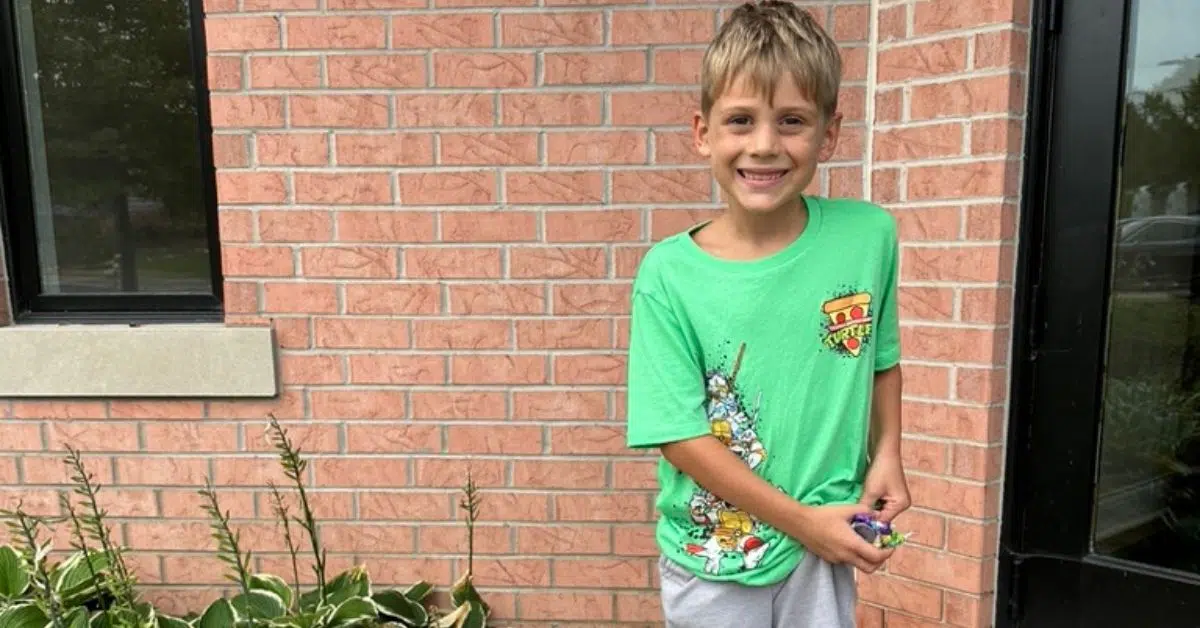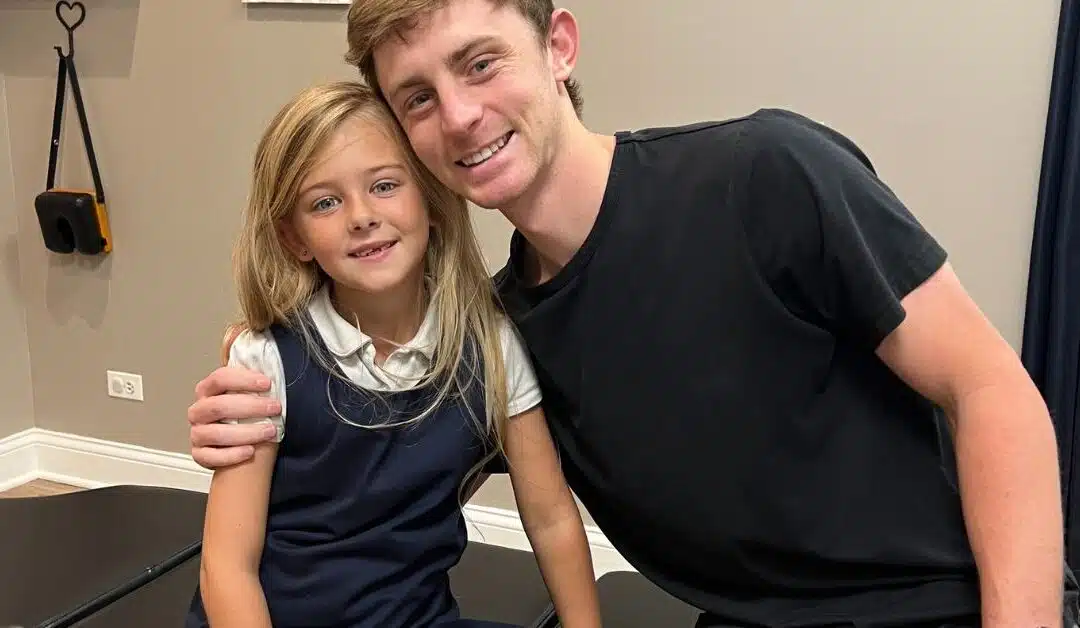Episodes of vasovagal syncope are far more common in children than most parents realize. 1% of all pediatric emergency visits are for vasovagal syncope. This sudden passing out is terrifying for kids and concerning for caregivers.
While the medical system often brushes these incidents off as benign, families deserve real solutions.
Vasovagal syncope occurs when the vagus nerve signals the nervous system to dilate blood vessels and slow the heart rate, reducing blood flow to the brain.
Discover the distinct mechanisms triggering vasovagal responses (fainting events) and the steps to address these root causes for your child instead of settling for symptom relief alone. By identifying triggers, teaching preventive techniques, and restoring proper neurological communication, episodes of transient unconsciousness can be minimized without medications.
What is the Vagus Nerve?
The vagus nerve is the longest and most critical nerve connecting the brain and body. It extends from the brainstem to nearly every major organ. Proper vagus nerve functioning helps control breathing, heart rate, digestion, inflammation, and other key processes.
When the vagus nerve struggles to activate relaxation responses, children may experience anxiety, gut issues, poor sleep, and low immunity. Supporting healthy vagus nerve signaling prevents these concerns and promotes resilience.
What Is Vasovagal Syncope?
Vasovagal syncope, also called neurocardiogenic, vasovagal response, or reflex syncope, refers to a sudden drop in heart rate and blood pressure that reduces blood flow to the brain, causing temporary loss of consciousness. It’s the most common underlying cause of fainting.
The vagus nerve, the key parasympathetic nerve responsible for triggering relaxation responses, plays an integral role. During vasovagal episodes, the vagus nerve sends signals that prompt blood vessels to dilate suddenly and heart rate to drop. While this vasovagal reflex is normally adaptive, in some children, it becomes overresponsive.
When certain triggers like emotional distress, the sight of blood, or standing motionless hit an already-sensitized system, the vagus nerve overreacts. The dramatically slowed heartbeat and dilated vessels reduce blood flow to the brainstem, leading to rapid passing out. Once horizontal, blood flow is restored, and kids typically recover quickly.
Various factors, including birth trauma, chronic stress, and toxin exposure, can impair vagus nerve signaling over time. Detecting this dysfunction early is critical to preventing fainting episodes through precise stimulation of vagal pathways.
Signs and Symptoms of Vasovagal Syncope
Recognizing patterns before vasovagal fainting allows early intervention, which may prevent full loss of consciousness. However, some children exhibit no warning signs at all before sudden syncope.
Common prodromes preceding a vasovagal event include:
- Lightheadedness, weakness
- Nausea
- Sweating or chills
- Tunnel vision
- Muffled hearing
- Yawning repeatedly
- Staring blankly
If lying down immediately at the earliest indication, kids often avoid progressing to a full blackout. However, once consciousness falters, they will fully faint within seconds if standing or sitting up.
Those who lose awareness will collapse if not supported to the ground in a few moments. Recovery, though, is typically very rapid after passing out. Once horizontal, blood flow to the brain resumes quickly, and kids regain sensory awareness.
However, as the nervous system regulates, children often remain fatigued, lightheaded, or confused for some time afterward. Lingering symptoms may last hours in sensitive children. Recurrent vasovagal syncope, if unaddressed, can significantly impact quality of life.
Understanding Neurocardiogenic Syncope
Neurocardiogenic syncope is another term for vasovagal syncope that emphasizes the neurological mechanisms behind these fainting episodes. As the name indicates, neurocardiogenic syncope originates from a disruption in normal communication pathways between the heart and brain.
More specifically, the term highlights that there is a neurological basis for the abruptly slowed heart rate and precipitous drop in blood pressure observed in vasovagal fainting events. Triggers like prolonged standing, fear, severe pain, or even urination activate the vagus nerve, suppressing sympathetic drive and stimulating the heart’s slowing capacity. This leads to excessive lowering of heart rate and cardiac output.
When the heartbeat significantly slows down, it reduces blood flow to the brain, temporarily losing consciousness. However, lying down restores blood pressure and patients quickly regain consciousness. Understanding this sudden suppression of cardiac function suggests that cases of pediatric fainting may be due to a neurological imbalance rather than a problem with the heart or other organs.
Key things to know about neurocardiogenic syncope:
- Term for vasovagal syncope emphasizing neurological basis
- Involves dysfunctional signaling between the heart and brain
- Vagus nerve over-suppresses sympathetic tone
- A slowed heart rate reduces blood flow to the brain
- Triggers like fear, standing, or pain incite response
- Indicates pediatric fainting is not due to heart disease itself
Traditional Reflex Syncope Treatments and Diagnosis
Since brief losses of consciousness can be common amongst children, doctors often minimize vasovagal syncope as inconsequential without deeper investigation into root causes. Their diagnostic workup ensures life-threatening conditions like seizures, head injuries, or heart arrhythmias are ruled out.
Evaluation often involves a medical history, family history, physical examination, neurological testing, and an EKG to check heart rhythm. If abnormalities are found on the exam or EKG, doctors will order more testing, such as cardiac monitoring, imaging, or bloodwork, to uncover other causes of fainting.
If cardiac and primary neurological diseases have been ruled out but uncertainty continues, a tilt-table test may be utilized to assess susceptibility to vasovagal episodes when upright definitively.
In severe recurrent cases, medications like beta blockers and SSRIs may be trialed to attempt to dampen exaggerated neural reflexes. Yet these approaches yield inconsistent results with side effects.
While critical for ruling out life-threatening conditions, this diagnostic and treatment approach fails to resolve the fundamental neurological dysfunction, which creates the episodes of vasovagal syncope in the first place. Families deserve answers to the root causes and compassionate care that empowers their children to thrive.
“The Perfect Storm” of Factors: Understanding SPD and Vasovagal Syncope
“The Perfect Storm” refers to the cascading sequence of events contributing to many chronic health conditions. It recognizes that genetics alone cannot explain today’s dramatic rise in childhood issues like anxiety, ADHD, SPD, and more.
Instead, “The Perfect Storm” model views early exposure to physical, chemical, and emotional stresses as disrupting development, setting the stage for later symptoms. Key factors span from birth trauma and recurrent infections to leaky gut and neurological dysfunction. Appreciating these interconnected pieces is crucial for complete healing.
Research indicates a significant overlap between sensory processing challenges and syncope, supporting the role of neurological dysfunction in excessive vagal reactivity. This correlation underscores how an overwhelmed, stressed, nervous system sets the stage for excessive vagal nerve reactivity.
Let’s connect the dots. Sensory Processing Disorder (SPD) arises from neurological interference chiefly affecting the brainstem and vagus nerve—key centers controlling nervous system regulation. Birth trauma, restricted movement, and unresolved neural interference contribute to impaired signaling.
This manifests as dysautonomia—sympathetic fight-or-flight overdrive paired with parasympathetic withdrawal. The vagus nerve struggles to activate regular relaxation, digestion, and growth processes. Overwhelming stimuli and emotional distress trigger vasovagal episodes against this backdrop of neurological dysfunction.
Restoring optimal regulation requires addressing the root causes of SPD, like subluxation-induced nerve interference. Evaluating neurologic tone and carefully releasing accumulated tension around cranial nerves and the upper neck allows nervous system coordination to return online.
As the origins of sensory challenges are identified and treated, episodic vasovagal syncope fades away alongside other reflex syncope symptoms like anxiety, sleep troubles, poor behavior, and cognitive issues.
Assessing Vagus Nerve Function with HRV
Since the vagus nerve plays a pivotal role in vasovagal syncope, having technology to quantify its functionality provides invaluable insights.
Heart Rate Variability (HRV) analyzes changes in heartbeat intervals to generate nervous system metrics like stress resilience. Low HRV signifies suppressed vagus nerve activity, while optimal scores reflect healthy baseline vagal tone.
For kids prone to fainting, establishing their baseline HRV score provides a comparison point to track improvements following therapeutic interventions. It also helps determine the appropriate care frequency and intensity needed to resolve the underlying neurological causes.
Neurologically-Focused Chiropractic Care for Vasovagal Syncope
The great news is vasovagal syncope can often be well-managed without medications by addressing root causes. Conservative care focuses first on preventing episodes by avoiding triggers and using physical counter-maneuvers when warning signs hit.
However, minimizing recurrences most effectively requires structurally and neurologically supporting healthy vagus nerve signaling. This is precisely what chiropractic neurological care excels at.
Gentle cranial and upper cervical adjustments reduce nerve irritation and realign membranes surrounding brainstem communication pathways. Dietary compounds like magnesium and omega oils also aid nerve conduction and development.
Rather than artificially overriding physiology with medication side effects, Neurologically-Focused Chiropractic Care empowers the child’s self-regulating biology. As the nervous system returns to balance, the vagus nerve restores appropriate responses—resolving distress at its origins.
Preventing Fainting Episodes with Neurological Care
While vasovagal syncope may recur periodically, implementing proactive measures minimizes event frequency and impact. Strict avoidance of triggers like poor hydration, prolonged standing in heat, and emotional distress can be helpful.
Teaching children an awareness of early warning signs allows them to get horizontal immediately at the earliest prodromal indication. This vagal counter-maneuver often averts losing consciousness altogether. Clenching leg and arm muscles also help retain blood pressure until lying down.
Ultimately, what parents of children with syncope need most is empowerment, education, and compassionate care tailored to their child’s needs. While rarely dangerous alone, passing out unpredictably remains disruptive and difficult.
By identifying and addressing the root causes of impaired vagus nerve communication, new possibilities emerge. Combining precise neurological chiropractic care, trigger avoidance, acute rescue maneuvers, and heart rate variability guidance provides the clarity and confidence families deserve.
If your child’s health struggles involve fainting or related aspects like anxiety, digestive issues, or poor immune function, use our PX Docs Directory today to find a qualified provider near you.





